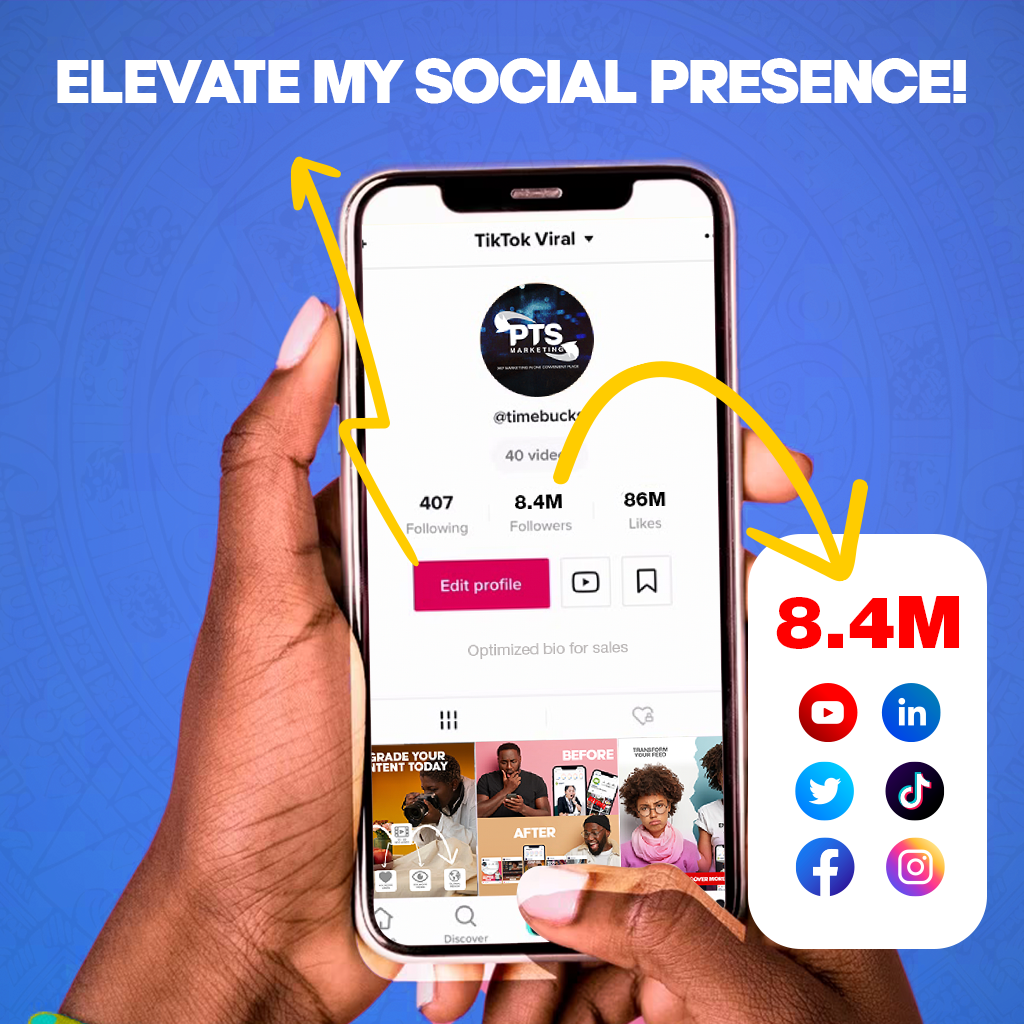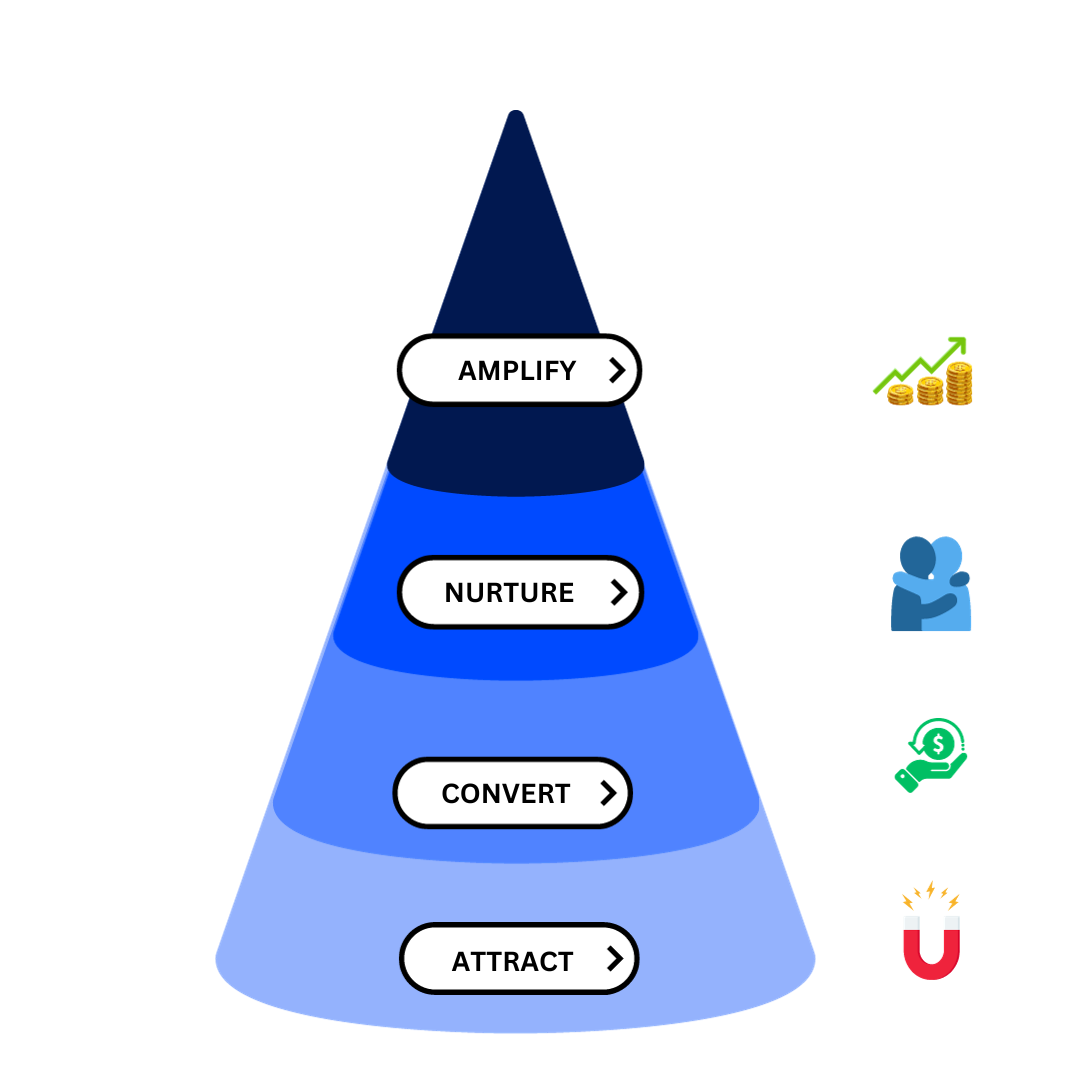Introduction: Good Marketing Strategies for Jamaica Can Be Your Golden Ticket
Are you tired of pouring money into marketing strategies for Jamaica that seem to evaporate like morning dew in the Jamaican sun? Then you’re not alone. Like you, many local businesses struggle to see a return on their marketing investment, often falling prey to the myth that marketing is a necessary evil—a money pit with no guaranteed returns. But what if I told you there’s a way to flip the script, to transform marketing from a gamble into your most lucrative investment?
As a result of this problem, PTS Marketing created a tool called the 360-degree Profit Roadmap, which shows the most transformative marketing strategies for Jamaica and its business landscape. This isn’t just another marketing gimmick; it’s a proven, holistic approach that turns the traditional marketing model on its head, ensuring every dollar you spend works as hard as you do to multiply themselves.
In this blog, we’re not just going to expose the pitfalls of bad marketing strategies for Jamaica; we’re going to dive deep into the roadmap that savvy Jamaican entrepreneurs are using to craft marketing campaigns that don’t just resonate—they sell. Whether you’re a mom-and-pop shop in Kingston or an emerging tech start-up in Montego Bay, the principles of the 360-degree Profit Roadmap are universal, scalable, and ripe for the picking.
So, brew some Blue Mountain coffee, settle in, and let’s embark on a journey to demystify marketing strategies. By the end of this read, you’ll have the tools to turn your marketing strategy from a murky swamp into a clear, passable river leading straight to the sea of your success.
Understanding Marketing Strategies for Jamaica: The Good, The Bad, and The Profitable
Good Marketing Strategies
In the realm of business, particularly in the vibrant market of Jamaica, understanding the distinction between good and bad marketing can be the difference between profit and loss. So, what sets them apart? Good marketing is like the reggae music that flawlessly resonates with the soul of its listeners – it understands its audience, speaks their language, and dances to their rhythm. It’s the kind of marketing that doesn’t just chase after sales but builds a relationship with customers, turning one-time buyers into lifelong fans.
Bad Marketing Strategies
On the flip side, bad marketing misses the beat. It’s like a loud dancehall track playing in a church during service – out of place and disconnected from its audience. This kind of marketing feels like a shout into the void, where money is evaporated without a strategy, no targeting and no engagement or sales. Like an empty promise, the flashy ad with no substance looks good but doesn’t deliver. It wins awards but doesn’t win the hearts of your customers, leaving customers confused rather than convinced.
Let’s bring this home with a real-world example. Consider a local Jamaican café that decides to market its new coffee blend. Good marketing would involve creating a story around the coffee, perhaps highlighting its Blue Mountain origin, showcasing the farmers, and offering a taste of the culture in every sip. It’s authentic, engaging, and it piques interest. In contrast, bad marketing would simply push the coffee with generic ads, neglecting the rich story behind it, and failing to connect with coffee lovers looking for that unique Jamaican flavor.
The 360-degree Profit Roadmap


Now, enter the 360-degree Profit Roadmap – your compass to navigate the world of marketing with precision and purpose.
Attract
This approach isn’t a one-way street; it’s a comprehensive journey through the landscape of modern marketing. It begins with ‘Attract’ at the base, where you draw in your audience with compelling content and social media magnetism.
Convert
Next, ‘Convert’ is where you turn interest into action. This is often done through an optimized landing page that’s as inviting as the warm Caribbean waters.
Nurture
‘Nurture’ follows, like nurturing seedlings in fertile soil. Where you engage your leads with email marketing, watering them with value and growing trust.
Amplify
Finally, ‘Amplify’ at the peak, where you scale your efforts. This is where you are turning your marketing into a megaphone that broadcasts your brand’s message far and wide.
Embracing the 360-degree Profit Roadmap means you see the whole picture. It’s not just about flashy ads or social media buzz. Think about creating a symphony of strategies that work in harmony to amplify your brand’s voice.
The 360-Degree Profit Roadmap Explained: Crafting Cohesive Marketing Strategies for Jamaica
Welcome to the 360-Degree Profit Roadmap. A holistic approach to marketing that empowers businesses to navigate the complex digital landscape with confidence and creativity. At the heart of this roadmap lies a pyramid structured to maximize your marketing efforts and streamline your path to profitability.
Social Media Marketing (SMM):

- Attract with Authenticity: Your brand’s social media presence is the heartbeat of your digital persona. Like the vibrant streets of Kingston, your social channels should buzz with life, color, and authenticity.
- Engagement: Create conversations, not just broadcasts. Engage with comments, share stories, and build a community.
- Consistency: Regularly update your content calendar with posts that reflect your brand’s voice and values.
- Analytics: Use social analytics to understand what resonates with your audience, then refine your strategy accordingly.
Landing Pages

- Convert Clicks to Customers: Your landing page is your digital storefront. Make it as welcoming as a cool breeze on a hot Montego Bay afternoon.
- Simplicity: Keep the design clean and focused, with a clear value proposition and call to action.
- Trust: Include testimonials and trust signals to reassure visitors of your credibility.
- Speed: Ensure your page loads quickly to prevent potential customers from bouncing off.
Email Marketing

- Nurture with Knowledge: Email marketing is like a good reggae rhythm. It should be engaging, consistent, and make the recipient want to return for more.
- Personalization: Segment your lists and personalize your emails to speak directly to the recipient’s interests.
- Value: Provide exclusive content, tips, and offers to keep subscribers hooked.
- Automation: Use email automation tools to send the right message at the right time, without manual effort.
Paid Ads:

- Amplify with Precision: Paid ads are your loudspeaker. Use them to amplify your reach, but ensure the message is targeted and clear.
- Targeting: Like a well-aimed cricket bowl, be precise with your targeting to reach the right audience.
- Testing: A/B test your ad copy and creatives to find what yields the best ROI.
- Budgeting: Allocate your budget wisely across platforms for the best overall performance.
Each level of this pyramid is interconnected, supporting and enhancing the others. By implementing each element effectively, you create a cohesive marketing strategy that’s both diverse and focused. It’s about ensuring every touchpoint with your customers is an opportunity to deepen the relationship and drive growth.
The 360-Degree Profit Roadmap isn’t just a strategy; it’s a philosophy. It’s about seeing each part of your marketing mix as a crucial component of a greater whole, much like the interconnected ecosystems of our beautiful Jamaica. Now let’s dive into how not implementing each level can be detrimental to marketing strategies for Jamaica.
Common Pitfalls when Employing Marketing Strategies for Jamaica: How to Steer Clear
In the world of marketing, it’s easy to get caught up in the latest trends and techniques. But even with the best tools and technologies at your disposal, certain pitfalls can derail your efforts. Here, we’ll explore six common marketing mistakes and the lessons we can learn from businesses that have effectively leveraged the 360-degree Profit Roadmap.
1. Tunnel Vision on a Single Marketing Strategy
The Mistake:
Diving deep into one marketing channel while neglecting others.
The Implication:
Your message might miss a broad section of your target audience.
The Case Study:
Blockbuster’s Tunnel Vision
One well-known company that was initially tunnel-visioned in their marketing approach was Blockbuster, a video rental store chain. Blockbuster had a strong brick-and-mortar presence and relied heavily on in-store promotions to drive business.
For years, they dominated the video rental market by focusing solely on physical stores. However, with the emergence of streaming services like Netflix and the popularity of online shopping, Blockbuster suffered a significant decline in sales and was eventually forced to close.
To overcome this challenge, Blockbuster needed to diversify its marketing strategies and embrace new technologies. They began offering online rentals and even partnered with streaming services like Netflix to provide customers with more options.
Additionally, they invested in social media marketing and email campaigns to reach a wider audience and promote their services online. While it was too little too late for Blockbuster to survive, their efforts to diversify their marketing strategy provide valuable lessons for businesses today.
Kodak’s Bankruptcy
Another example of tunnel vision in marketing is Kodak, a company that was once a powerhouse in the film and camera industry. Kodak’s marketing efforts were primarily focused on print advertisements and in-store displays. However, with the rise of digital photography, Kodak struggled to adapt and ultimately filed for bankruptcy in 2012.
To overcome this challenge, Kodak would have needed to embrace digital marketing and social media platforms to reach a wider audience and promote their digital camera products. They could have also invested in email campaigns and influencer collaborations to increase brand awareness and sales. However, Kodak failed to keep up with the fast-paced digital landscape and ultimately paid the price for its tunnel vision in marketing.
2. Skipping the SMM Foundation
The Mistake:
Jumping straight to Landing Pages (LP), Email Marketing (EM), or Paid Ads (PA) without establishing a strong Social Media Marketing (SMM) foundation.
The Implication:
You risk building on unstable ground, leading to weaker customer relationships and brand identity.
The Case Study:
Nike’s Shakey Foundation
Let’s take the example of Nike, a leading sportswear brand that faced a challenge in reaching out to its target audience through social media. Despite being a household name, Nike struggled to create a strong social media presence that could resonate with its consumers.
After conducting extensive market research, Nike revamped its social media strategy and focused on creating content that was both engaging and relevant to its audience.
This new approach involved leveraging social media influencers, launching interactive campaigns, and creating personalized marketing messages that spoke directly to the needs of its target audience. As a result of these efforts, Nike witnessed a 70% increase in social media engagement, leading to higher sales and increased brand recognition.
The success story of Nike’s social media marketing strategies underscores the importance of adapting to changing consumer needs and preferences. By embracing new technologies and platforms, brands can establish a strong social media presence that helps them connect with their target audience and build a loyal customer base. With the right strategy, social media can serve as a powerful tool for driving business growth and enhancing brand reputation in today’s digital age.
3. The “Throwing Spaghetti at the Wall” Approach
The Mistake:
One-Size-Fits-All Messaging—casting a wide net and hoping something sticks.
The Implication:
Your message gets lost in the noise, failing to resonate with anyone.
The Case Study:
Cokes’s All Fit
For example, one company that had struggled with one-size-fits-all messaging in the past was Coca-Cola. For years, they had relied on generic messaging with broad appeal, such as “Open Happiness” and “Taste the Feeling.” However, as consumer preferences shifted towards healthier options and more personalized experiences, Coca-Cola had to adapt their messaging strategy.
To overcome this challenge, Coca-Cola launched a new campaign called “Share a Coke.” They replaced their traditional logo with popular first names and encouraged consumers to find and share a bottle with their friends and family members who had those names. This campaign was a huge success, driving sales and engagement with the brand.
From there, Coca-Cola continued to tailor their messaging to different customer segments, launching campaigns like “Taste the Feeling” for younger audiences and “Share a Coke with” for specific events and occasions. By moving away from one-size-fits-all messaging and towards more personalized campaigns, Coca-Cola was able to stay relevant and connect with consumers in a more meaningful way.
4. Marketing Without a Strategy
The Mistake:
Implementing marketing tactics without a cohesive strategy.
The Implication:
This can lead to disjointed customer experiences and ineffective marketing spend.
The Case Study:
Cafe Blue’s Blues
Café Blue, a quaint Jamaican coffee shop, faced significant challenges with their previous sporadic marketing strategies for Jamaica. Disjointed efforts left the business struggling to attract and retain customers effectively. Realizing the need for a structured approach, the café took the initiative to refine its marketing activities.
By implementing a well-thought-out marketing strategy plan, Café Blue experienced a remarkable 30% increase in customer traffic within a mere six-month period.
The transformation at Café Blue underscores the pivotal role of proactive marketing planning in driving business success. The shift from haphazard marketing to a methodical approach enabled the coffee shop to engage its target audience more effectively, leading to a notable surge in foot traffic and sales.
This case study serves as a testament to the impact of strategic marketing planning for small businesses, showcasing how a structured and deliberate approach can yield substantial, tangible results in a relatively short timeframe.
Café Blue’s journey exemplifies the power of deliberate marketing strategies for Jamaica in reshaping the fortunes of a small business. Through the adoption of a more structured approach, the café witnessed a significant uptick in customer engagement, ultimately driving growth and success.
5. Forgetting the Call-to-Action (CTA)
The Mistake:
Delivering content without clear CTAs.
The Implication:
Customers are left without direction, leading to missed conversion opportunities.
The Case Study:
Chukka’s Action
Chukka, a leading adventure tour company in the Caribbean, implemented strategic marketing strategies for Jamaica to leverage strong calls-to-action (CTAs) on its landing page. By integrating compelling CTAs such as “Book Now” and “Explore Adventures,” Chukka aimed to capture the attention of potential customers and guide them toward taking action. The company meticulously crafted its CTAs to create a sense of urgency and excitement, prompting visitors to swiftly engage with their plethora of adventure tours.
The impact of Chukka’s enhanced CTAs was evident through a substantial 30% surge in online tour bookings within the first quarter of their implementation. By strategically placing these alluring CTAs throughout their website, Chukka effectively influenced site visitors to convert into active participants, driving a notable boost in the company’s overall revenue. These results firmly demonstrated the power of well-crafted CTAs in transforming casual browsers into eager adventure seekers, ultimately elevating Chukka’s market position and solidifying its reputation as a go-to provider for exhilarating Caribbean experiences.
By optimizing their landing page with strong and compelling CTAs, Chukka not only increased its tour bookings by 25%, but also succeeded in fostering a more seamless and engaging user experience. The strategic placement and persuasive nature of these CTAs helped potential customers overcome any hesitation and commit to booking their next adventure with Chukka. This approach underscored the pivotal role of CTAs in guiding user behavior and driving tangible business results in the highly competitive adventure tourism industry.
6. Overlooking Customer Feedback
The Mistake:
Ignoring the insights and feedback from your customer base.
The Implication:
You miss out on opportunities to improve and innovate.
The Case Study:
Digicel. Jamaica’s Most Customer-Centric Company
In 2018, Digicel Jamaica embarked on a customer feedback transformation journey. Prior to this initiative, customer feedback was not a focal point for the company, resulting in stagnant service delivery and waning customer loyalty. Inadequate network coverage and slow response times were affecting customer satisfaction and retention. These challenges were reflected in a 2018 customer satisfaction score and their average monthly churn rate of 5%.
To address these issues, Digicel Jamaica began actively seeking customer feedback through multiple channels, including online surveys, social media, and direct interactions. This effort led to the identification of key pain points, particularly in network coverage and customer service response times. This allowed them to be able to make changes to their marketing strategies for Jamaica.
The commitment to customer feedback and subsequent improvements yielded remarkable results for Digicel Jamaica. Customer loyalty strengthened, translating to an additional $10 million in annual revenue.
Furthermore, the company’s Net Promoter Score (NPS) rose from -5 to +25, indicating a significant shift in customer sentiment. This case study demonstrates how Digicel Jamaica’s transition from a non-feedback-oriented approach to a customer-centric model led to tangible increases in customer satisfaction, retention, and overall financial performance.
Incorporating the 360-Degree Profit Roadmap
Businesses like Coca Cola, Nike, and Café Blue demonstrate the tangible benefits of implementing the 360-degree Profit Roadmap. By avoiding these common mistakes and adopting a holistic marketing approach, businesses can see real growth, improved customer retention, and increased profitability.
Remember, marketing is not just about broadcasting your message; it’s about building a relationship with your audience, understanding their needs, and delivering value. By focusing on these key aspects and avoiding the pitfalls mentioned, your business can thrive in the dynamic and ever-changing landscape of digital marketing.
7 Actionable Strategies to Unleash Top Marketing Strategies for Jamaica Using the Power of the 360-Degree Profit Roadmap
Unlocking the full potential of your business is all about strategy. The 360-Degree Profit Roadmap isn’t just a model; it’s a blueprint for success. It allows you to optimize your marketing strategies for Jamaica. Follow these 7 strategic steps to transform your business’s marketing efforts and see tangible results.
1. Solidify Your Social Media Presence
Start where the conversation is: social media. Here’s how:
- Audit your channels: Are you where your customers are? If not, it’s time to pivot.
- Engage: Don’t just post and ghost. Engage with your followers daily.
- Analyze: Use tools to understand what works. Double down on successful tactics.
2. Craft Landing Pages That Convert
Your landing page is your digital handshake. Make it count:
- Clarity is king: Each landing page should have one clear message and offer.
- Optimize for action: Every element should nudge visitors towards the CTA.
- Test, test, test: Use A/B testing to find what resonates with your audience.
3. Email Marketing: Your Secret Weapon
Email isn’t dead; it’s your direct line to customers. Here’s your strategy:
- Personalize: Segment your list and personalize messages.
- Value first: Offer tips, tricks, and insights before you sell.
- Automate: Use drip campaigns to nurture leads on autopilot.
4. Maximize ROI with Paid Ads
Paid ads can be your profit powerhouse if used correctly:
- Target precisely: Use the wealth of data available to target your ideal customer.
- Craft compelling creatives: A/B test different images, videos, and headlines.
- Monitor and adjust: Keep an eye on your campaigns and adjust for performance.
5. Amplify Your Message
Once you have their attention, amplify:
- Leverage influencers: Partner with influencers who resonate with your brand.
- Content syndication: Get your content on platforms with larger audiences.
- Community building: Create a tribe around your brand through engagement.
6. Nurture Relationships
Building rapport leads to loyalty and sales:
- Listen and learn: Use social listening tools to understand your customers.
- Engage meaningfully: Don’t just respond; have conversations.
- Reward loyalty: Offer exclusive deals to your most engaged followers.
7. Convert Insights into Action
Use the data you’ve gathered to refine your approach:
- Data-driven decisions: Let analytics guide your marketing moves.
- Iterate: Continually refine your approach based on feedback.
- Innovate: Stay ahead by being willing to try new tactics.
Ready to take the first step?
Sign up for a free social media audit to start your journey with the 360-degree Profit Roadmap. This audit will provide you with invaluable insights and actionable recommendations to strengthen your social media strategy, which is the foundation of the pyramid.
[Sign Up for Your Free Audit Now]
Take advantage of this offer to get expert eyes on your social media presence. It’s the first step toward a robust marketing strategy that covers all bases, just as the Profit Roadmap suggests.
Remember, each of these steps is crucial. By following the Profit Roadmap, you’re not just throwing tactics at the wall and seeing what sticks; you’re crafting a calculated approach to marketing that will see your business grow in revenue and reputation.



